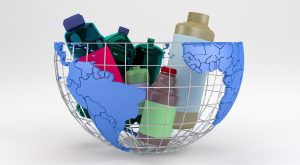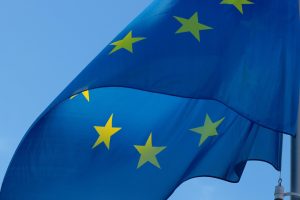According to the R-PET industry study by ICIS, the collection volume of post-consumer PET bottles reached 2.2 million tonnes in 2019, an increase of a 5% compared to 2018, which is the highest growth rate recorded in several years. However, the overall collection rate in the European Union increased by only 1% reaching a 64% in 2019. This means that more than a third of post-consumer bottles remains uncollected. Given that PET is one of the most recyclable polymers on the market and the collection structure is now much more mature, why are higher recycling rates not being achieved?
Why the collection strategy fails
PET’s characteristics make it ideal for recycling and thus to move towards a circular economy, as it can include up to 100% recycled content and R-PET (recycled polyethylene terephthalate) reduces CO2 emissions by up to 79% compared to virgin PET. This material is essential to achieve a circular economy: by 2025, PET bottles will be made from at least 25% recycled PET, and by 2030, nine out of ten bottles will be collected for recycling.
Other topics of interest: Demand for recycled PET/PE will reach 43% in Europe by 2022
However, it is precisely at the collection stage that problems arise. According to Eurostat, only 30% of the waste generated is composted or recycled. In the specific case of PET, the results of the ICIS study show that progress has been made in the amount of plastic collected for recycling, but it also reveals that, regarding PET plastic bottles, inadequate collection strategies and high levels of material contamination might affect this progress negatively.
What cannot be denied is that the European PET recycling industry responded to the growing demand for PET supply in 2018, increasing its capacity by 11%. However, collection rates did not match the growth and neither did availability of the highest quality, colourless material. Bales of material from deposit return systems accounted for 31.6% of the total supply, compared to a 33% in 2017.
Why the PET recycling structure needs a boost
The recycling of plastic, and therefore PET, has become mandatory for companies and administrations. The main drivers are the commitment of commercial brands and legislation, mainly the Single Use Plastics Directive (SUP), which requires the use of recycled content in bottles.
Other topics of interest: The constraint on single-use plastics has increased, but what is the actual impact?
Following the SUP Directive, the packaging industry is required to achieve a 25% recycled content in PET bottles by 2025. The study shows a growth in R-PET penetration in the bottles-in-contact-with-food market of a 14.5% in 2019, compared to a 10.7% in 2018. However, this figure is still a 10% lower than the established target. It also falls short of the companies’ expectations, which go well beyond these levels, reaching up to 100% for some of their products.







